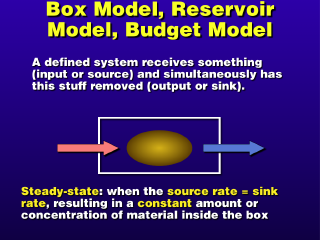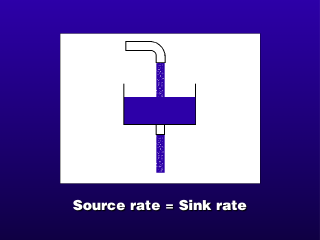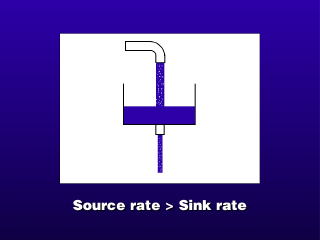 |
To get dosages and exposures, we need to find the concentration
of pollutants in the atmosphere. We define a specific volume---the
box---in which pollutants mix. Then we see that sink
processes result in a continuous removal of pollutants while emissions are
continuous sources of the pollutant.
If the source rate is the same as the sink rate, then the concentration of pollutant in the box should remain constant
(because the absolute amount of pollutant inside the box is constant when source=sink).
This steady-state concentration will be the concentration of pollutant
used to determine health effects from a particular source or emission rate.
In real-life situations, the sink
rate is not necessarily equal to the source rate at any one time, so the concentration
will not be steady-state. However, since the absolute sink rate usually has
some dependence on the current concentration of the pollutant in the box (generally,
the higher the concentration, the higher the absolute sink rate), there may
be a natural tendency for the concentration to change so that the sink rate
changes until it is equal to the source rate, at which point we will achieve
equilibrium.
|


